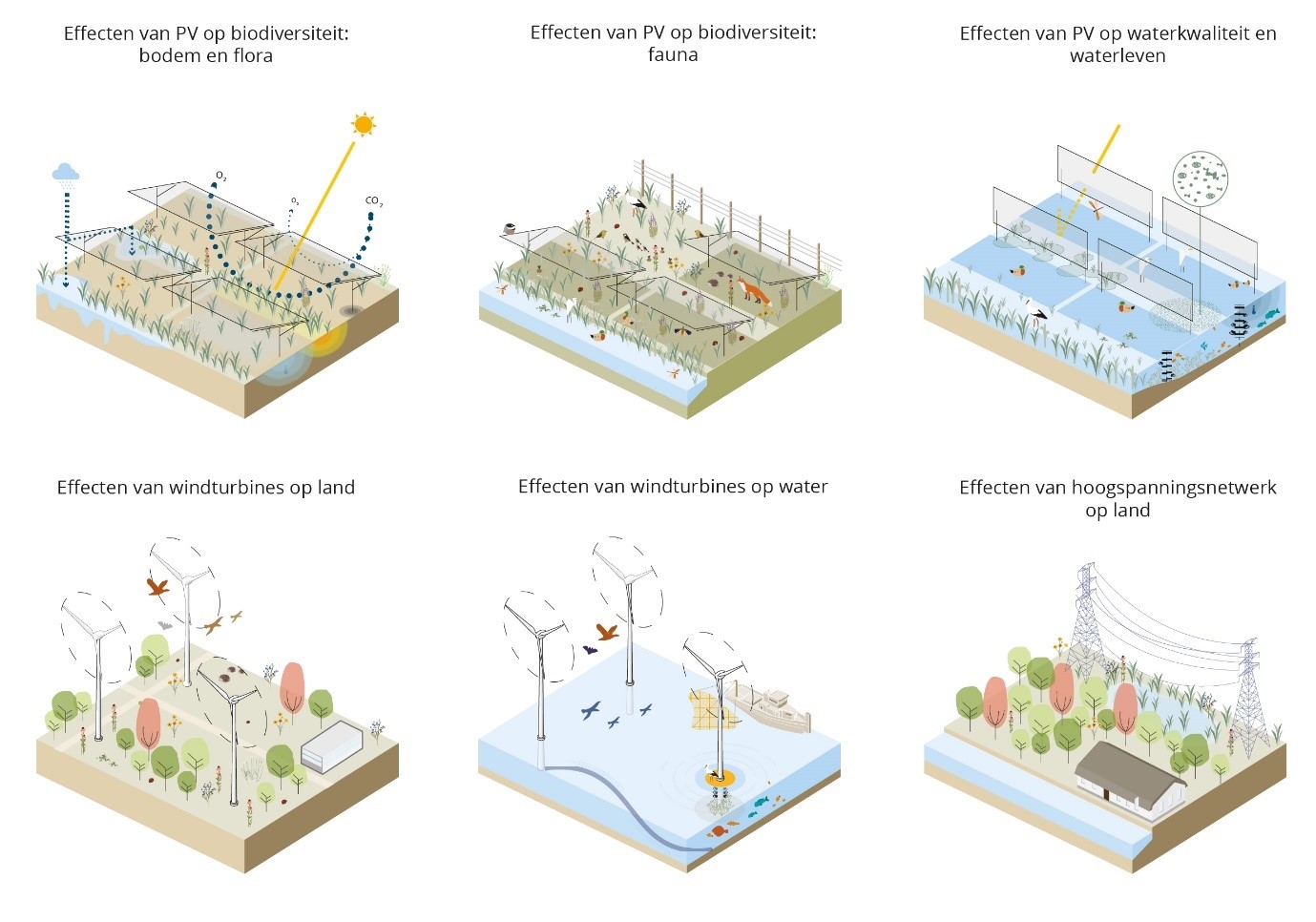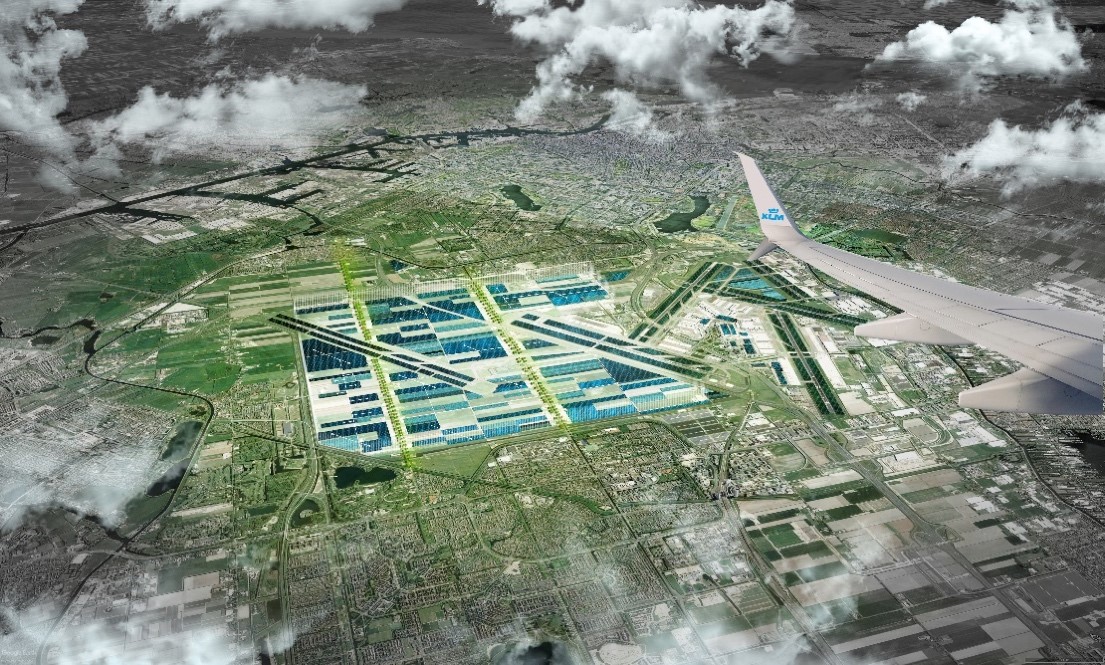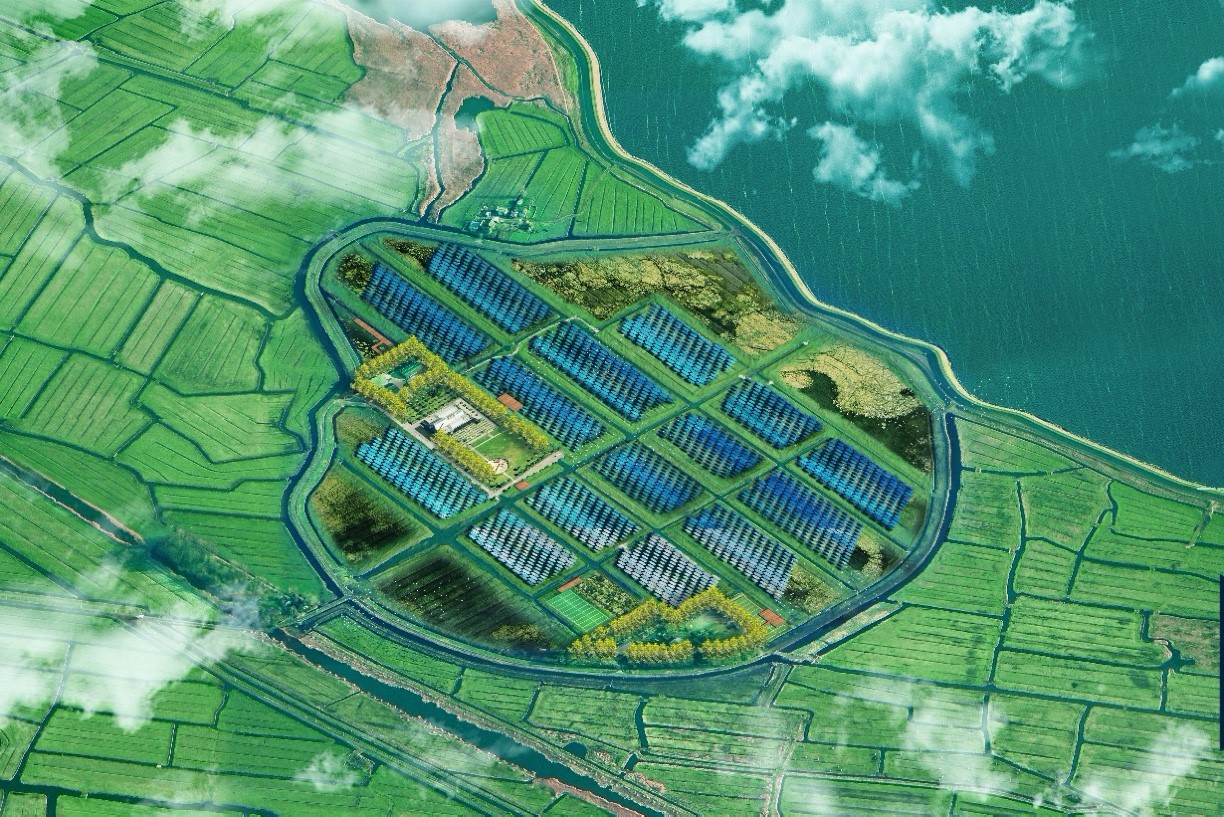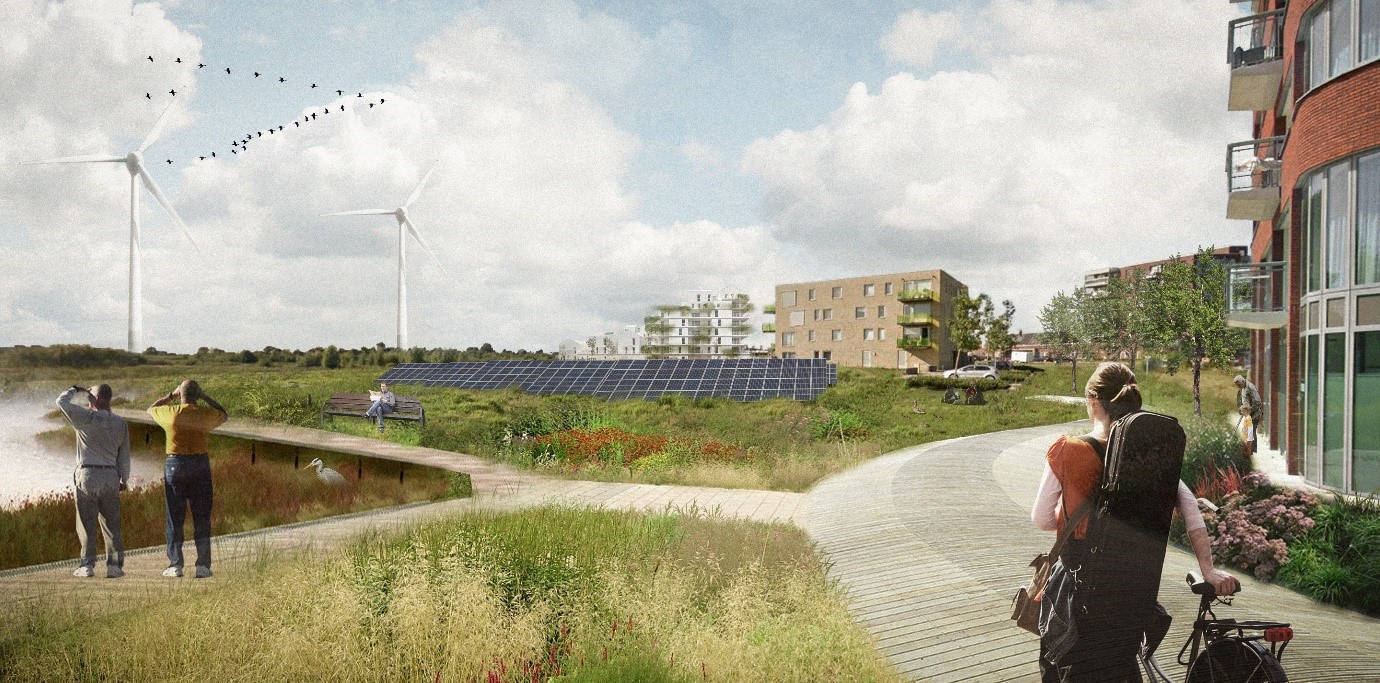MULTIPLY aims to increase energy efficiency through the development of cities and districts with a focus on energy systems, land-use planning and mobility. These three themes are inseparable and must be treated and developed jointly. The programme therefore stimulates integrated planning, i.e. planning that cuts across disciplines and silos in order to address a challenge within all its complexity. As part of MULTIPLY, the Dutch design offices Generation.Energy and PosadMaxwan hosted expert workshops to share their experiences on integrated urban planning with all committed- and forerunner cities. They encourage sustainability through integrated planning in many of their projects. Most recently, the two design agencies have acted as the spatial and energy experts for the development of a regional energy strategy for the Dutch province of North Holland. In this project they advised on how to apply integrated planning in the transition towards renewable energy.
The spatial impact of energy is significant. In case of the Netherlands, much of the spatial impact of the current energy consumption lays abroad in oil field, mines and refineries. With the transition to renewable energy, this spatial demand is becoming increasingly visible in the Dutch landscape as well. Energy structures such as wind farms, solar plants, geothermal power plants and biomass require space. These systems also require additional infrastructure in order to form a holistic system and add restriction zones for safety, noise and the protection of biodiversity and environment. As stated by Gernot Stoeglehner, the options for energy strategies are also shaped by the scale of intervention, i.e., local, regional or spatial contexts like urban, suburban and rural areas. The energy demand in dense urban areas is higher and requires a large resource hinterland for production, but they also have good preconditions for achieving energy efficiency and potential for domestic energy generation through solar, wastewater, waste incineration, geothermal, etc, whereas, rural areas have low energy efficiency because of low density and a varied mix of functional demand, yet having more possibility for production (Stoeghlehner, 2020). So, energy requires space as much as spatial characteristics influence energy production.
With these new energy modes, the relation between energy and space is changing and outlines the relevance of energy related spatial planning. To facilitate a holistic and integrated energy transition, an approach is needed that takes into consideration the various spatial layers, combines methodological development, public investments as well as raising awareness. In the Netherlands, in order to reach the energy neutral goal by 2050 set by the Klimaatakkoord, the country is divided into 30 independent RES (Regional Energy Strategy) regions so they can each develop their own integrated and holistic approach. The province of North Holland has two RES regions and is expected to generate nearly 4 times more wind and solar energy in the next 10 years – 0.7 TWh to 2.7 TWh in 2030.
Generation. Energy and PosadMaxwan, along with the design office of FABRICations, Bright and van Paridon x de Groot, have been the spatial and energy experts for the RES region of North Holland. With the main goal of integrated spatial planning, the design agencies have contributed in researching different methods in which renewable energy can be integrated with other forms of land use and landscape. Six research questions have been elaborated in sectors of Agricultural land and energy, Energy and nature, Energy and infrastructure, Energy in urban areas, Energy and heritage and Airports and energy.

Energy and nature – Integration with different forms of landscape
Source: PosadMaxwan
A wide range of measures in the form of ‘building blocks’ have been developed that can be used to create context specific interventions that accommodate energy infrastructure as well as address local challenges (see image above). These blocks reflect the combination of 1) the energy source (wind or solar), 2) the location (e.g. on roofs or next to highways) and 3) a possible condition (e.g. only in linear arrangement or only in combination with enhancing biodiversity. Keeping in mind the characteristics and quality of landscape and maximize the efficiency on land, these building blocks were used to achieve goals for six potential, a representation of which can be seen through the following examples
- Icon for Schiphol/Icon for Netherlands: Landing and departing at Schiphol is often the first introduction to the Netherlands. There is a lot of space at and around Schiphol for large-scale generation of solar energy.

- Small reclaimed land as energy testing grounds: There are a number of smaller reclaimed lands in the North Holland peat area, which may no longer be properly drained in the near future and cannot be used for agriculture. One opportunity is to use these small reclaimed lands as "testing grounds for water and energy conscious developments". In these test beds, experiments can be carried out with new forms of energy production in combination with wet agriculture, nature, recreation, etc.

- Sustainable urban design, vision of the future: A solar park lasts about 15 to 25 years. Thinking about the future, it is strategic to locate solar parks in areas where – in the long term – urban developments will take place. When the solar parks are carefully situated and integrated with landscape resources (such as avenues and groves), the fields are a real pre-investment. By the time the solar fields give way to urban functions, the avenues and groves have reached maturity. This strategy can be used on a small scale (in village parks), but also on the scale of larger polder units such as Heerhugowaard or Purmer.

References:
- Stoeglehner G, Erker S, Neugebauer G (2014) Energieraumplanung: Ergebnisse der ÖREK-Partnerschaft: Materialienband. Schriftenreihe/Österreichische Raumordnungskonferenz (ÖROK), vol 192. Geschäftsstelle der Österr. Raumordnungskonferenz (ÖROK), Wien
- Stoeglehner, G. Integrated spatial and energy planning: a means to reach sustainable development goals. Evolut Inst Econ Rev(2020). https://doi.org/10.1007/s40844-020-00160-7








